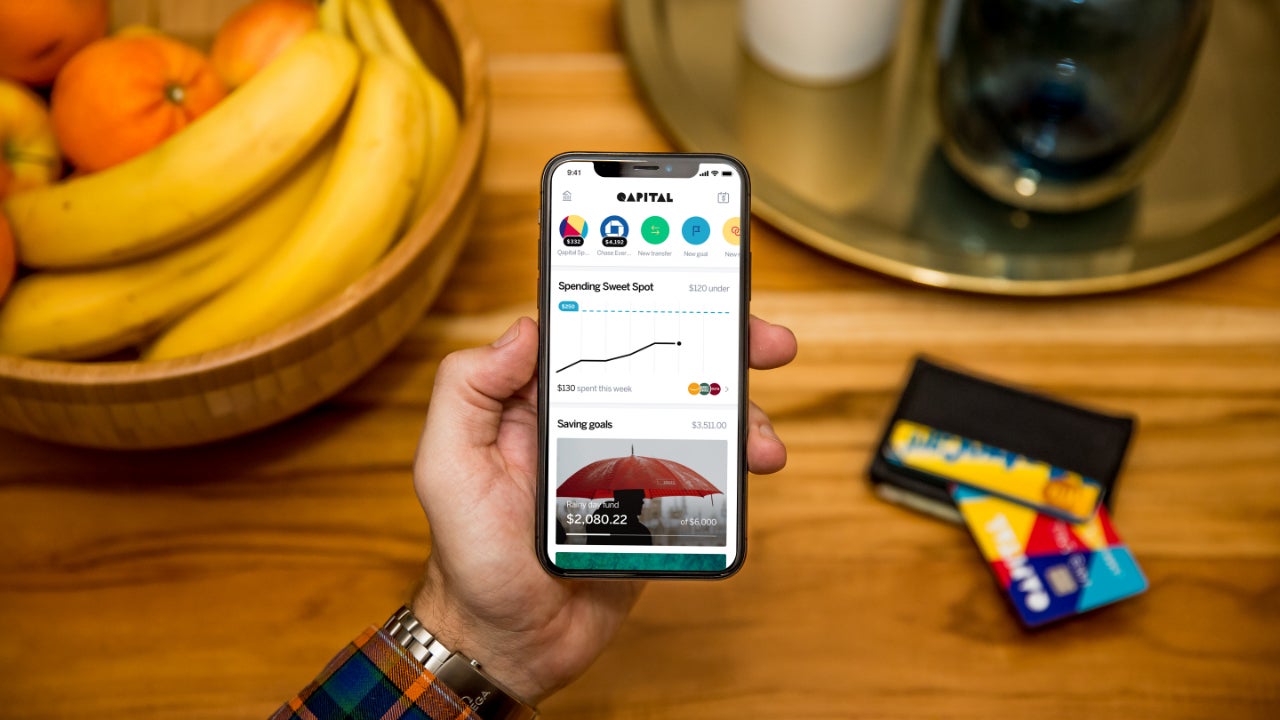Best budgeting apps for 2023




Budgeting can get complicated rather quickly, especially if you have multiple accounts to keep track of. For example, you may have credit cards and savings accounts, loans and investments to track — and let’s not forget about all your regular monthly bills and expenses. While some people manage to follow along with a budget and track their spending in Excel spreadsheets, doing a good job can be difficult if you have a lot of money coming in and out every month.
Fortunately, you don’t have to do it on your own. The best budgeting apps solve this problem by helping you track every account you have automatically and in one place. You can get started by choosing one of the best budgeting apps and downloading it to your phone, and you only need to add all your accounts to the app to begin budgeting with ease from there.
Ultimately, the best budget app for you is one that meets your individual needs best, whether you’re looking to pay down debt or save up a down payment so you can purchase a home. With that in mind, it’s worth learning about these services’ pros and cons before you decide which money management app to install.
For an overview of the best budgeting apps of 2023, read on to learn more.
Mint: Best free budgeting app
| Pros | Cons |
|---|---|
|
|
Mint is often included in “best personal finance app” lists, and for good reason. The app was made to be simple with an easy-to-use interface that helps people keep track of where their money is going and how much they have left to spend.
Like many money management apps, Mint connects directly to your bank accounts, as well as your credit card accounts, investment accounts and loan accounts. Once your accounts are connected, Mint automatically collects and categorizes new transactions in order to give you a clear picture of your spending.
This free budgeting app also tracks your credit score, and you can even add upcoming bills and get reminders when they come due. That way, you won’t accidentally miss a credit card payment and see your credit score drop.
Mint is an excellent and easy way to track your expenses and compare your monthly budget to your actual spending. You can set up a budget for each of your spending categories and set up multiple saving goals. The app also gives useful updates — for example, it can now track monthly subscriptions.
You Need A Budget (YNAB): Best for zero-based budgeting
| Pros | Cons |
|---|---|
|
|
YNAB is what you might call an “advanced” money management app — but it delivers. According to YNAB, the average new user saves $600 by the second month of using the app and over $6,000 in the first year. To achieve those results, you need to follow the YNAB system, which involves giving every dollar a job, saving for both your immediate and true expenses and balancing every penny you overspend. Such an approach is also called zero-based budgeting.
When you set up your YNAB account, you create budget categories not only for your day-to-day bills and expenses but also for any expenses you may likely have in the future.
If you think you might need to replace your laptop in the next three years, for example, YNAB wants you to set aside $42 each month for a “new laptop.” When the three years are up, you’ll have the $1,500 you need for that new MacBook. YNAB also wants you to set budgeting categories for clothing, gifts, car repairs and other variable or occasional expenses — which YNAB calls your “true expenses” — and start saving for them right now.
Once you have your budget set up, you need to give every dollar a job. Yes, even the dollars in your savings accounts. Like Mint, YNAB lets you automatically connect your bank and brokerage accounts. Unlike Mint, YNAB wants you to assign every dollar to a potential expense, either now or in the future.
The last part of the process involves reconciling your actual spending with your budget. Unlike other money management apps, YNAB requires you to cover overspending in one category with available dollars in another category. In other words: If you spend $5 extra on dining out, you have to decide whether to take that $5 out of your clothing budget, your vacation budget or the budget for that laptop you think you’ll need in three years.
Although YNAB describes itself as “simple,” many new users aren’t fully comfortable with the program until they’ve taken one of YNAB’s many free tutorials. YNAB is also labor-intensive; every transaction needs to be confirmed, cleared and categorized.
YNAB also requires a monthly or annual fee. A subscription runs at $99 per year or $14.99 per month, so you’ll need to budget for that to cover the cost.
Honeydue: Best for couples
| Pros | Cons |
|---|---|
|
|
Honeydue makes it easy for couples to gain visibility into each other’s and shared finances. You and your partner can connect all your accounts and categorize transactions as a shared or individual expense. You’ll also see a shared calendar with upcoming bills and get reminders when it’s time to pay.
There’s a chat function you can use to discuss any issues (“Stop signing up for free trials and forgetting about them, we have 21 subscriptions already!”) or simply send emojis (like hearts when they’re buying you gifts to encourage more gifts!). You can also choose to keep certain transactions private — for example, when you want that gift to be a surprise.
You can set up monthly limits for each spending category in the app, and the app will notify you when you’re reaching the limit. However, Honeydue doesn’t offer functionality for creating financial goals, so if that’s an important feature to you, you might want to look into other apps.
EveryDollar: Best for customization
| Pros | Cons |
|---|---|
|
|
EveryDollar is another budgeting app to consider in 2023, particularly if you want to get serious about saving money or paying down debt. This app was created by Dave Ramsey’s team, so it is geared toward individuals who want to take control of their finances and begin building wealth. EveryDollar connects to more than 10,000 banks and financial institutions with the goal of letting users track all their financial transactions seamlessly in one place, and it lets users customize their plan based on the way they spend.
While EveryDollar can be accessed via a smartphone, users can also log in to their account to track their finances on a desktop computer. This app also lets users write notes within their budget to read later on, and it lets you split transactions from a single receipt in order to categorize all your expenses appropriately.
This app does have a 14-day free trial. After that, it requires an annual payment of $79.99 or a monthly fee of $12.99.
Credit card tools to consider
You don’t always have to get a third-party app to track your spending — some useful features may be available right in your credit card app.
If you have a Discover credit card, for example, the Discover App comes with Spend Analyzer that lets you see your total monthly spend breakdown by category. It also offers highlights for the current and previous period, such as total spend amount and your top spending category, and shows you how your total spending has been fluctuating month-to-month.
Another feature the Discover app offers is Recurring Billing, whereby you can take a look at your recurring charges to the card in a simple dashboard.
If you bank with Chase, under the Spending Summary section, you can get a Snapshot of your spending by category in the Chase Mobile app. You can also create a Wealth Plan based on your financial goals — buying a car, managing spending or paying down debt, for example — track investments, check your credit score or even set up a chart with a J.P. Morgan Advisor.
Check your credit card app to see which features your issuer offers. You might not be able to create a budget or set saving goals, but it’s an easy way to track your card spending.
The bottom line
While some of the best budgeting apps of 2023 are absolutely free to use, you can access a tool with more features overall if you’re willing to pay a regular fee. Paying for budgeting help may also help you feel like you have “skin in the game,” and this has the potential to motivate you even more when it comes to reaching your financial goals.
Once you find an app you love, remember to keep checking in with it and using what you learn to improve your finances. Whether you want to save for a big trip, see if you can afford to go out to dinner or bring your spending more in line with your values, the best budgeting apps can be a big help.
You may also like

How to make a zero-based budget

9 best money-saving apps of 2024

10 apps that will help you save money on food



